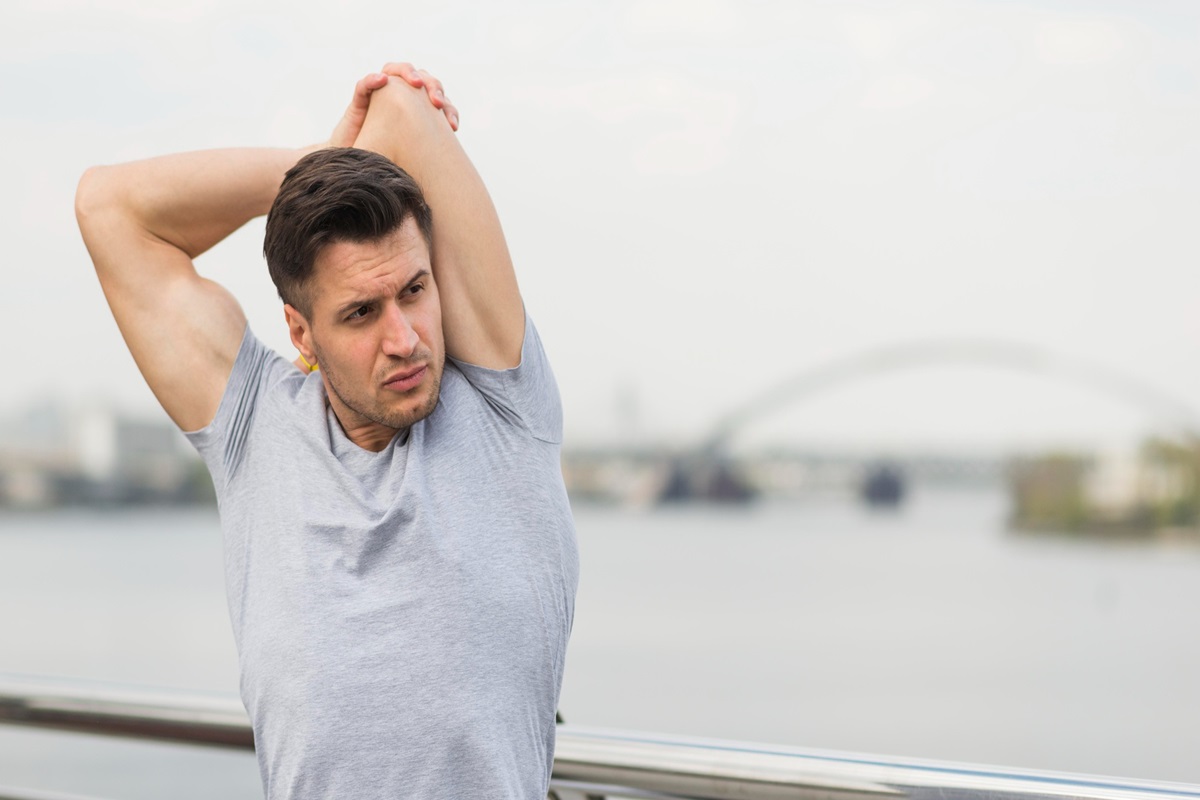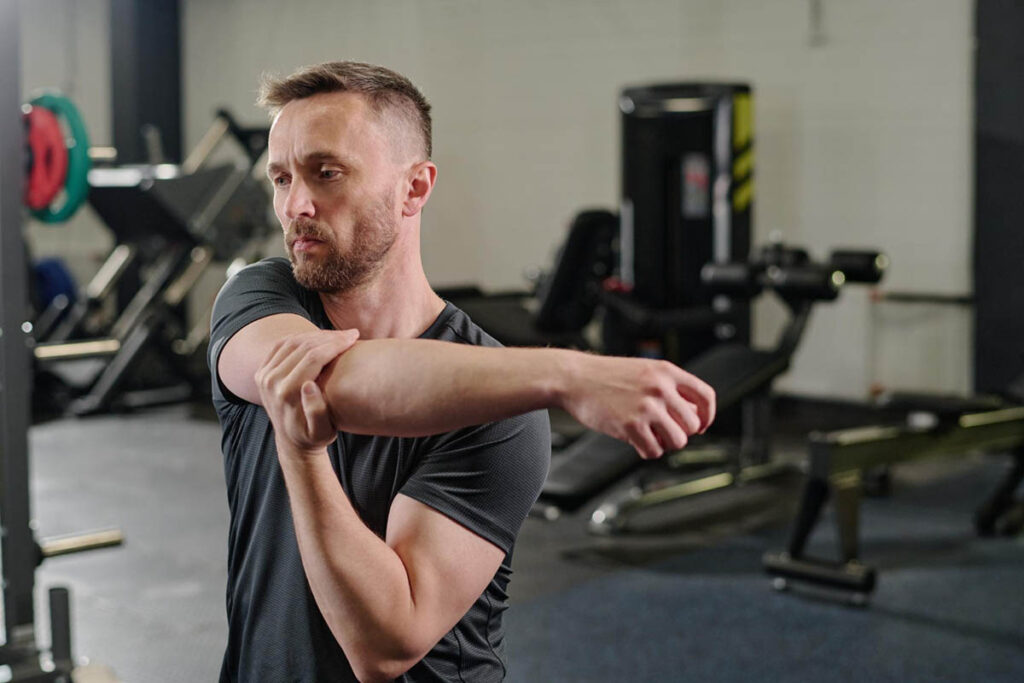Popping shoulder pain when lifting arm is a prevalent issue that can interfere with everyday activities and diminish overall quality of life. Shoulder pain is widespread and causes substantial morbidity. Standardized classification systems based upon presumed patho-anatomical origins have proved poorly reproducible and hampered epidemiological research. This condition often arises from various underlying causes, such as injuries, overuse, or degenerative changes, each requiring accurate diagnosis for effective management. Whether the discomfort is mild or severe, understanding the symptoms, identifying potential causes, and exploring treatment options are crucial steps toward recovery. This comprehensive guide will delve into the common signs, possible triggers, and evidence-based treatment methods to help you address and prevent shoulder pain and popping.
Common Symptoms of Pain and Popping in the Shoulder
Shoulder pain and popping, medically called crepitus, often manifest alongside other symptoms that vary depending on the cause. Seeking shoulder pain treatment promptly can help manage symptoms effectively and prevent further complications.
- Sharp or Dull Pain: Sharp pain is often sudden and intense, commonly associated with acute injuries, while dull pain is persistent and may indicate chronic conditions like arthritis or tendonitis. This discomfort can be localized in the shoulder or radiated down the arm, affecting nearby muscles and nerves.
- Limited Range of Motion: Limited range of motion refers to the inability to fully lift, rotate, or extend the arm due to stiffness or pain. This restriction can hinder daily activities like reaching overhead, dressing, or performing physical tasks.
- Swelling or Inflammation: Swelling occurs when tissues in the shoulder become irritated or injured, leading to fluid buildup and visible puffiness. Inflammation often accompanies swelling and may make the shoulder feel warm to the touch, signaling an underlying issue such as bursitis or a rotator cuff injury.
- Weakness in the Arm: Weakness often results from muscle or tendon damage, making it difficult to lift or carry objects. This symptom can indicate a loss of strength or coordination in the shoulder muscles, commonly seen in conditions like rotator cuff tears or nerve impingements.
Recognizing these symptoms early can aid in seeking timely treatment to prevent the worsening of the condition.
How Shoulder Pain Affects Mobility and Daily Life
Shoulder pain directly impacts mobility, making simple tasks like dressing, reaching for objects, or even sleeping difficult. For adults aged 45–64 years, the annual cumulative incidence was 2.4%. The incidence density was estimated at 17.3 per 1,000 person-years for adults in the 45–64 age group, at 12.8 per 1000 person-years for those in the 65–74 years group, and at 6.7 per 1000 person-years among those aged 75 years and over. Occupational factors, notably physical demands of work, were associated with the incidence of shoulder pain. Non-occupational factors were also linked to the occurrence of shoulder pain.
Chronic shoulder issues may lead to compensatory movements, which can strain other muscles and joints. In the workplace, shoulder pain often reduces productivity and quality of life, particularly for individuals with physically demanding jobs.
Causes of Shoulder Pain and Popping When Lifting Arm
Pain and popping in the shoulder when lifting the arm can stem from various structural, muscular, or joint-related issues. Identifying the root cause is crucial for developing a targeted treatment plan and preventing further complications.
Rotator Cuff Injuries and Tears
The rotator cuff consists of muscles and tendons that stabilize and move the shoulder joint. Injuries or tears in this area, often resulting from repetitive motions or acute trauma, can cause significant pain, weakness, and a popping sensation during arm movement.
Shoulder Impingement Syndrome
Shoulder impingement syndrome happens when the rotator cuff tendons become pinched or compressed between the shoulder joint bones. This leads to inflammation, pain, and a noticeable clicking or popping sound during arm movement, especially when lifting or reaching overhead.
Labral Tears and Instability
The labrum is a ring of cartilage that helps stabilize the shoulder joint and supports smooth movement when torn or unstable; it can cause pain, popping sounds, and the feeling that the shoulder joint is slipping or may dislocate.
Arthritis and Degenerative Changes
Osteoarthritis or rheumatoid arthritis in the shoulder joint can lead to cartilage wear, causing pain, stiffness, and crepitus. Degenerative changes are more common in older adults and those with repetitive stress injuries.
When to Seek Treatment for Shoulder Pain and Popping

Seeking timely shoulder pain and popping when lifting arm treatment is critical to addressing underlying issues before they worsen. Early intervention can help alleviate discomfort, restore mobility, and prevent long-term complications or chronic conditions.
Identifying Red Flags for Serious Shoulder Conditions
Recognizing warning signs of serious shoulder issues is essential to avoid permanent damage or prolonged recovery. Specific symptoms may indicate significant injuries or underlying conditions that require immediate medical evaluation and treatment.
- Severe pain with no improvement
- Visible deformity or dislocation
- Numbness or tingling in the arm
- Loss of shoulder function
Understanding Chronic vs. Acute Shoulder Pain
Acute shoulder pain typically occurs suddenly and is often linked to a specific injury or trauma, such as a fall or muscle strain. In contrast, chronic shoulder pain develops gradually over time, usually resulting from conditions like arthritis, tendonitis, or repetitive strain, requiring a different approach to treatment.
How Physical Therapy for Shoulder Pain Can Help
Physical therapy offers a safe and effective approach to relieving shoulder pain, restoring mobility, and addressing underlying issues. A reliable physical therapy service can provide personalized care to target the root causes of pain. Focusing on targeted exercises and therapeutic techniques helps strengthen the shoulder, reduce discomfort, and prevent further injuries.
Benefits of Physical Therapy for Shoulder Recovery
Physical therapy is an essential part of the recovery process for individuals experiencing shoulder pain and popping. It provides a holistic approach to addressing the root cause of discomfort while improving overall shoulder strength and function.
- Pain Relief: Physical therapists employ targeted techniques such as manual therapy, stretching, and modalities like heat or cold therapy to alleviate pain. These approaches help reduce inflammation, improve blood flow, and promote healing in the affected shoulder area.
- Improved Mobility: Through guided exercises and stretches, physical therapy focuses on restoring the shoulder’s range of motion. These movements help loosen stiff joints and muscles, enabling smoother and more functional arm movements.
- Strengthening: Strengthening exercises target the muscles surrounding the shoulder joint, improving stability and support. By building strength, these exercises help prevent further injuries and enhance overall shoulder function during daily activities.
Techniques Used by Physical Therapists to Relieve Shoulder Pain
Physical therapists use various proven techniques to address the root causes of shoulder pain and enhance recovery. These methods are tailored to each individual and focus on reducing pain, restoring mobility, and improving overall shoulder function.
- Manual Therapy: Manual therapy involves hands-on techniques such as joint mobilization and soft tissue manipulation to reduce stiffness and improve flexibility. Enhancing circulation also promotes healing and alleviates pain in the affected shoulder.
- Therapeutic Exercises: Therapeutic exercises include targeted strengthening and stretching routines designed to restore shoulder stability and mobility. These exercises help improve muscle balance, reduce strain, and prevent future injuries.
- Modalities: Heat, ice, ultrasound, or electrical stimulation manage pain and reduce inflammation. These treatments complement physical therapy exercises by enhancing comfort and accelerating recovery.
What to Expect During Physical Therapy Sessions
Your therapist will assess your shoulder’s condition and create a personalized plan. Sessions may include exercises, education on posture and movement, and strategies to prevent future injuries.
Comprehensive Treatment Options for Shoulder Pain
Effectively managing shoulder pain often requires a combination of treatments tailored to the individual’s condition. A multifaceted approach addresses pain relief, promotes healing, and strengthens the shoulder to prevent future issues.
Rest, Ice, and Heat Therapy
Resting the shoulder allows injured tissues to heal and prevents further strain or damage. Ice helps reduce inflammation and swelling, while heat therapy promotes blood flow and alleviates stiffness, easing discomfort.
Exercises to Strengthen Shoulder Muscles
Strengthening exercises focus on improving the function of weakened or imbalanced muscles around the shoulder joint. They enhance stability, reduce pain, and minimize popping sensations during movement.
Advanced Treatments: Corticosteroids and Surgery
Corticosteroid injections are often used in severe cases to reduce inflammation and provide temporary relief from pain quickly. When conservative treatments fail, surgical options may be necessary to restore shoulder function, such as repairing torn tendons or addressing structural damage.
How Vitality Tulsa Can Help with Shoulder Pain
Addressing shoulder pain requires expert guidance and a personalized approach to ensure effective recovery. Vitality Therapy and Performance provides comprehensive treatments to relieve pain, restore mobility, and improve overall quality of life.
Expert Physical Therapy Services in Tulsa
Our licensed physical therapists specialize in evidence-based approaches to treating shoulder pain and dysfunction effectively. Using the latest techniques, we aim to address the root causes of your discomfort and restore optimal function.
Personalized Care for Pain and Popping in the Shoulder
We recognize that every shoulder condition is unique and requires a tailored approach to treatment. Our customized care plans are designed to address your specific symptoms, enhance recovery, and meet your individual goals.
Why Choose Vitality Tulsa for Your Recovery
Vitality Tulsa offers state-of-the-art facilities and a team of compassionate professionals dedicated to your well-being. Our focus on achieving positive outcomes makes us a trusted partner in your journey to recovery.
Preventing Shoulder Pain and Popping

Taking proactive steps to protect your shoulder health can significantly reduce the likelihood of pain and injury. Implementing simple yet effective prevention strategies can help maintain mobility and prevent recurring issues.
Proper Posture and Ergonomics
Good posture ensures the shoulder joint remains aligned, reducing unnecessary stress on muscles and tendons. Using ergonomic tools and adjusting your workstation can help prevent shoulder strain during daily activities.
Regular Stretching and Strengthening Exercises
Regular stretching enhances flexibility, while strengthening exercises build support for the shoulder joint. Together, these practices improve overall shoulder health and minimize the risk of pain or injuries.
Avoiding Overuse and Injuries
Avoid repetitive or excessive shoulder movements that can lead to strain or overuse injuries. Taking breaks during physical activities and employing proper techniques can help protect your shoulder from damage.
Conclusion
Shoulder pain and popping when lifting your arm can significantly impact daily life, but with the right approach, recovery is achievable. From physical therapy techniques to advanced medical interventions, addressing the root cause and taking proactive steps can restore mobility and alleviate discomfort. Prioritizing your shoulder health ensures a faster recovery and prevents future issues, helping you confidently return to your daily activities.
FAQs
Why does my shoulder hurt and pop when I lift my arm?
Pain and popping in the shoulder often result from issues like rotator cuff injuries, impingement, or arthritis. A thorough evaluation by a healthcare professional can identify the cause and guide treatment.
What is the fastest way to heal a shoulder impingement?
The quickest path to healing involves rest, ice therapy, anti-inflammatory medications, and physical therapy. A tailored exercise plan can help restore mobility and alleviate pain.
How do I get my shoulder to stop popping and hurting?
Strengthening the shoulder muscles, improving posture, and avoiding repetitive movements are essential. Physical therapy is highly effective in addressing underlying issues and preventing future problems.

